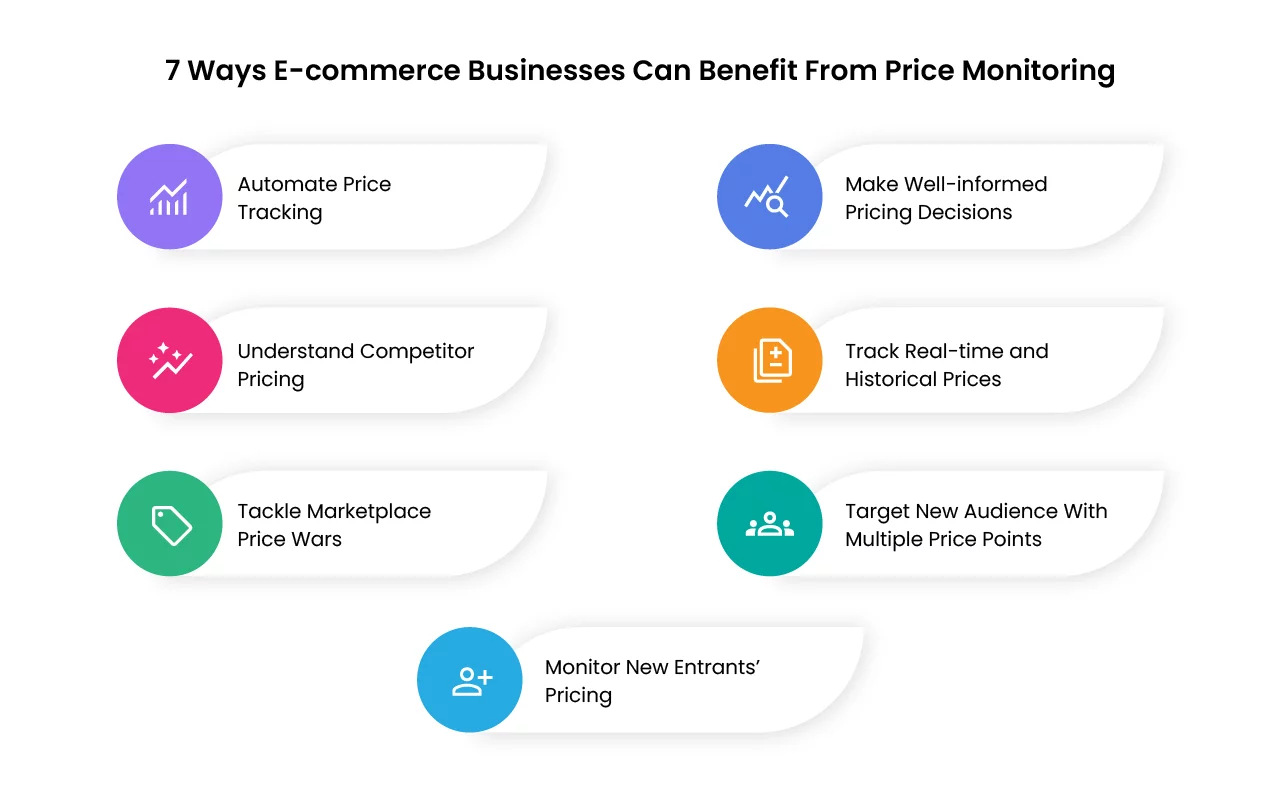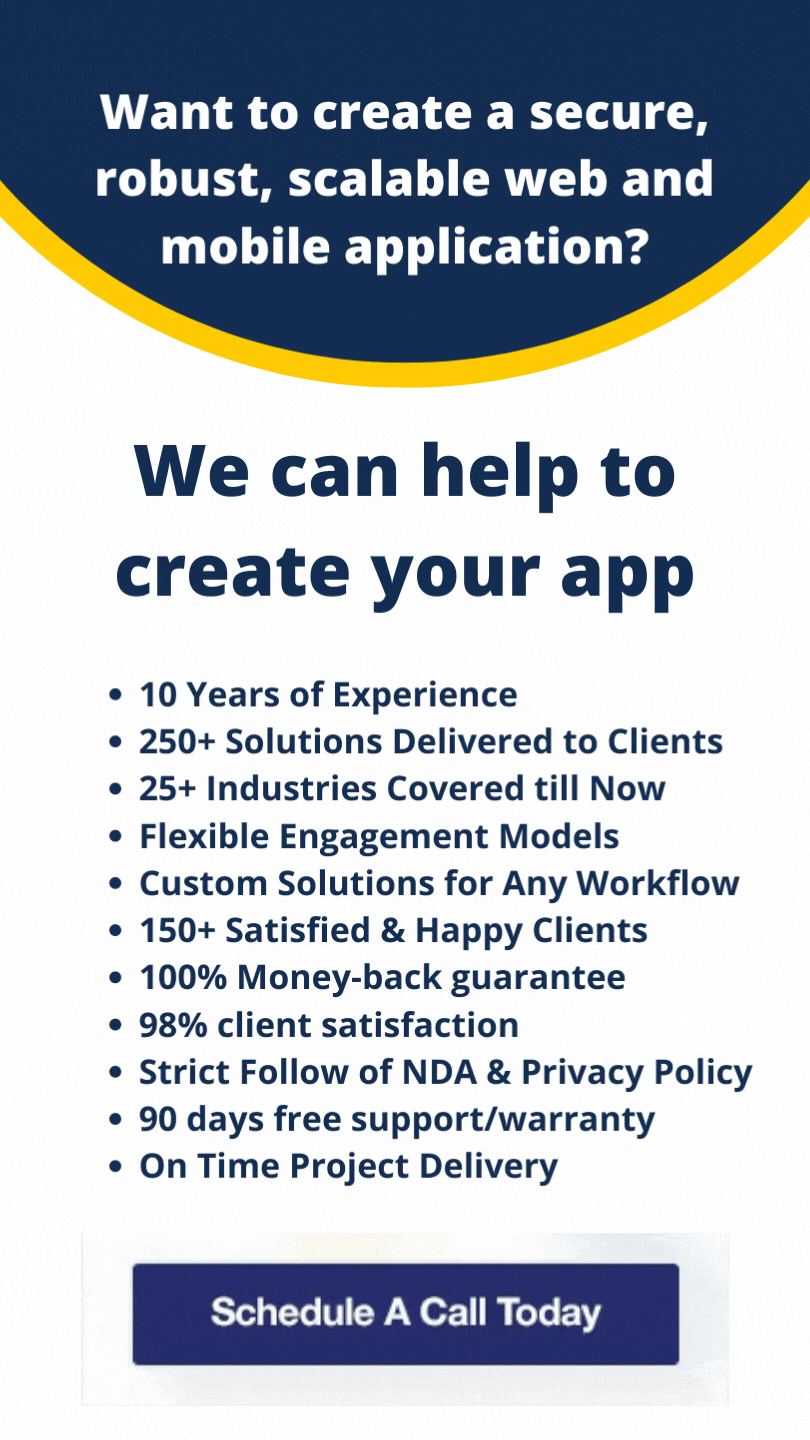Are you tired of always checking competitor prices, only to discover they’ve changed once more? Feeling the pressure to remain competitive but uncertain how to optimize your pricing technique? Enter real-time eCommerce price monitoring – your secret weapon in the field. By leveraging technology to track and analyze competitor pricing and market trends, businesses can make taught choices that support productivity and showcase position. This blog post jumps into the subtleties of price monitoring, investigating how it enables eCommerce businesses to thrive in a ferocious market environment.
Understanding Price Monitoring in eCommerce
What is eCommerce Price Monitoring?
eCommerce price monitoring is the process of utilizing technology to track and compare the costs of items sold online. This practice is significant for businesses that strive to stay competitive in the digital marketplace. By not only watching their own pricing but also that of their competitors through successful eCommerce competitor price monitoring, companies can dynamically adjust their techniques, guaranteeing they attract more clients without sacrificing benefit edges.
Types of Price Monitoring
eCommerce Price Monitoring:
At its core, this includes tracking the costs of one’s own items. eCommerce businesses utilize this information to alter their pricing techniques based on different components, counting demand, stock levels, and promotional activities. This sort of observation helps guarantee that a business remains competitive while maximizing its income.
Competitor Price Tracking:
This tracks the pricing strategies and changes of competitors. It’s vital to understand how competitors are situating themselves in the market and reacting to these moves deliberately. Whether reacting to a sudden price drop or a special promotion, staying updated with eCommerce competitor price tracking makes a difference businesses keep up a competitive edge.
Price Monitoring Services:
Numerous businesses turn to specialized third-party services that give comprehensive price monitoring solutions. These services offer advanced tools and analytics to track prices across numerous stages and regions, giving important insights that go past straightforward cost comparisons. They help businesses get broader market trends and customer behavior, empowering more nuanced and successful pricing strategies.
Understanding the diverse viewpoints and sorts of price monitoring is essential for any eCommerce business looking to use this effective tool. By successfully tracking and analyzing price information, businesses can not only remain competitive but also improve their market insights and key positioning.
Key Benefits of Price Monitoring for eCommerce Businesses

Source: Metricscart
Among the various advantages of utilizing price monitoring services, the coordinated competitive advantage is noteworthy. Through real-time eCommerce price tracking, businesses can quickly react to cost changes made by competitors. Here are a few of the noteworthy benefits:
Competitive Advantage
By utilizing eCommerce competitor price tracking, businesses can pick up a direct competitive advantage. This advantage comes from the capacity to react rapidly to cost changes made by competitors. For example, if a competitor brings down their cost on a prevalent thing, a business can choose to coordinate this cost to remain competitive or even offer a short-term promotion to exceed the competitor. This agility helps keep up client interest and avoids market share loss.
Optimized Pricing Strategies for E-commerce Competitor Price Monitoring
Real-time information encourages dynamic pricing strategies, allowing businesses to alter costs based on diverse components such as demand change, competitor pricing, and market conditions. This approach makes a difference in maximizing sales and profits, especially during distinctive seasons or promotional periods. For instance, a luxury brand like Tissot may adjust its watch pricing higher during peak demand seasons and slightly lower during quieter periods to maintain competitiveness while protecting brand value.
Improved Profit Margins Through eCommerce Price Monitoring
Effective price monitoring can straightforwardly affect profit margins emphatically. By understanding the optimal price points that attract clients and keep up a healthy margin, businesses can set costs intelligently. In addition, tracking competitor costs guarantees that a business isn’t pricing itself out of the advertising or undervaluing its products, both of which can negatively affect profitability.
Enhanced Customer Loyalty with eCommerce Price Tracking
Customers are more likely to remain faithful to a brand that reliably offers reasonable costs compared to showcase rates. Cost monitoring helps businesses keep up an estimating strategy that reflects market realities, which in turn supports a reliable brand picture. Believe, combined with vital estimating, energizes client loyalty and can lead to increased lifetime value from the client base.
Challenges in Price Monitoring
While price monitoring is important, it does not come without its challenges. Addressing these effectively is significant for harnessing the full potential of price monitoring tools.
Data Accuracy and Timeliness in eCommerce Price Monitoring
The most noteworthy challenge in real-time price monitoring is ensuring the accuracy and timeliness of data. Wrong data can lead to poor estimating choices that may hurt the business’s reputation or profitability. Businesses must contribute reliable tools that provide up-to-date and exact data, guaranteeing that pricing strategies are based on current market conditions.
Legal and Ethical Considerations
Price monitoring must be conducted within legal and moral boundaries. Issues such as cost fixing or underhand strategies to undercut competitors can lead to legal repercussions and harm to the brand’s reputation. Businesses must guarantee that their price monitoring practices comply with all significant laws and maintain high ethical benchmarks.
Choosing the Right Price Monitoring Tools and Services
To effectively implement price monitoring, choosing the right tools is essential. These tools should not only provide precise and timely data but also fit seamlessly into the business’s existing operations.
Features of Effective Price Monitoring Tools
A good price monitoring tool should offer highlights like real-time updates, comprehensive analytics, and user-friendly dashboards. Integration capabilities with other eCommerce management systems (like inventory and client relationship management systems) are also crucial for a holistic approach to price management.
Review of Top Price Monitoring Services for eCommerce Price Tracking
There are a few top-notch price monitoring services accessible nowadays, each with its qualities. Services like Price2Spy, Competera, and Minderest offer robust solutions tailored to different business sizes and needs. These stages regularly provide features that allow for detailed analysis and robotization, which can altogether ease the burden of manual price tracking.
Empowering eCommerce with Smart Price Monitoring
Effective price monitoring is a transformative tool for eCommerce businesses. It not only makes a difference in remaining competitive by adjusting costs based on real-time market data but too plays a basic part in technique development and execution. As the eCommerce landscape proceeds to evolve, the ability to screen and react to cost changes with agility will recognize effective businesses from the rest.
Best Practices in Price Monitoring
Effective price monitoring is not just about having the right tools but also about coordinating these tools viably into your business strategy. Here are a few best practices that can help guarantee that your price monitoring efforts are successful.
1. Define Clear Objectives for eCommerce Competitor Price Monitoring:
Begin by clearly defining what you aim to accomplish with price monitoring. Whether it’s maintaining a competitive edge, optimizing benefit margins, or something else, having clear targets will direct your approach to monitoring and methodology adjustments.
2. Comprehensive Market Analysis for eCommerce Price Tracking:
Price monitoring should be a portion of a broader market investigation strategy. Get it not just your competitors’ pricing but also market demand, consumer behavior, and financial indicators. This holistic view can educate more effective pricing strategies.
3. Regular Reviews and Adjustments:
The market is dynamic, so your pricing strategy should be as well. Regularly survey the information collected through price monitoring to guarantee your pricing remains competitive and suitable. Be prepared to make adjustments in response to both micro and macro shifts in the market.
4. Staff Training and Awareness for eCommerce Price Monitoring:
Ensure that your team understands the importance of price monitoring and how it fits into the broader business strategy. Training for significant staff on how to utilize monitoring tools viably can enhance the esteem derived from these systems.
5. Technology Integration:
Integrate price monitoring tools with other business systems (like ERP and CRM systems) to streamline forms and improve information accuracy. This integration guarantees that pricing choices are informed by comprehensive, real-time data across all business operations.
Staying Ahead of the Market with eCommerce Price Monitoring
1. Proactive Monitoring for eCommerce Price Tracking:
Don’t just respond to changes; expect them by analyzing trends and patterns in the data. This proactive approach can offer assistance to adjust your techniques before major showcase shifts occur, keeping you one step ahead of competitors.
2. Utilize Advanced Analytics for eCommerce Competitor Price Monitoring:
Leverage advanced analytics to pick up more profound experiences from your price-checking data. Predictive analytics can estimate future patterns, permitting you to plan and adjust your estimating strategy in advance.
3. Diverse Data Sources for eCommerce Price Tracking:
Incorporate data from a variety of sources, including social media, competitor websites, and client input, to choose a more comprehensive understanding of the market. This diversity helps in making more informed choices that go beyond conventional competitive tracking.
4. Customer-Centric Approach for eCommerce Competitor Price Tracking:
Always consider the customer’s point of view in your pricing strategy. Understanding what drives customer loyalty and purchase decisions can help you optimize costs in a way that boosts both sales and client satisfaction.
5. Continuous Improvement for eCommerce Price Monitoring:
Regularly survey the effectiveness of your price monitoring practices and endeavor for continuous change. This might mean upgrading technologies, refining forms, or exploring new information sources to enhance accuracy and effectiveness.
Harnessing the Power of Price Monitoring for eCommerce Excellence
In the fiercely competitive world of eCommerce, price monitoring is not a fair need but a vital asset. By effectively executing advanced price monitoring tools and following best practices, businesses can ensure they not only survive but flourish in the market. Real-time price monitoring empowers businesses to make data-driven decisions, adjust rapidly to market changes, and keep up a competitive edge, all of which are vital for long-term triumph. Reviewing and employing top-price monitoring services can significantly streamline the process.
Incorporating these methodologies into your business operations can essentially enhance your capacity to compete and succeed in the digital marketplace. As the eCommerce landscape evolves, those who can adjust quickly and strategically through effective price monitoring will lead the market.
Prepared to tackle the control of eCommerce Price Monitoring for your business? Contact us now to plan a personalized demo and find out how our web scraping solutions, backed by Kanhasoft’s skill and unwavering quality, can offer assistance you remain ahead of the competition, optimize pricing techniques, and drive development. With our demonstrated track record of conveying cutting-edge solutions and unparalleled client fulfillment, you can trust Kanhasoft to be your partner in accomplishing victory in the digital marketplace.
FAQ’s
Q: Why is price monitoring crucial for eCommerce businesses?
A: Price monitoring is important for eCommerce businesses as it helps them remain competitive by altering costing methodologies based on real-time data, empowering them to get market trends, analyze competitor pricing, and optimize their claim pricing techniques to maximize profits.
Q: How does price monitoring offer assistance to businesses remaining competitive?
A: Price monitoring allows businesses to track competitors’ pricing methodologies in real-time, empowering them to react rapidly to changes such as cost drops or advancements, alter their own costs appropriately, and hold market share.
Q: What are the benefits of using price monitoring services?
A: Price monitoring services offer several benefits, including gaining a competitive advantage, optimizing pricing techniques, moving forward profit margins, and upgrading client loyalty by providing businesses with real-time information and analytics for educated pricing decisions.
Q: Are there legal or ethical considerations in price monitoring?
A: Yes, businesses must comply with important laws and ethical benchmarks, avoiding practices like price fixing or underhanded strategies to undercut competitors, conducting price monitoring straightforwardly and fairly to mitigate legal dangers and protect brand reputation.







